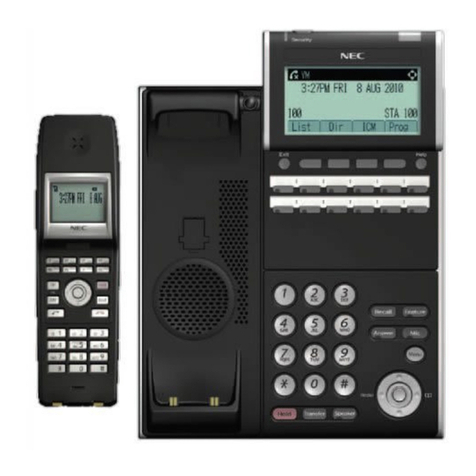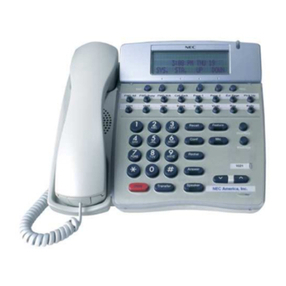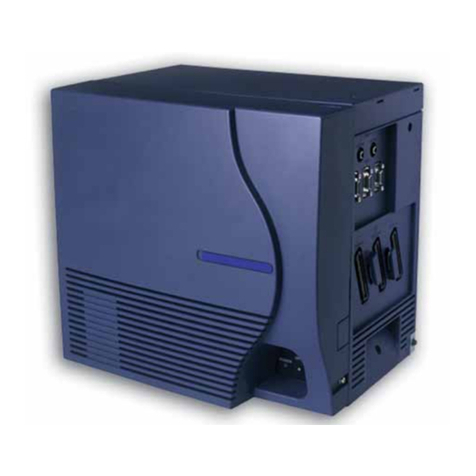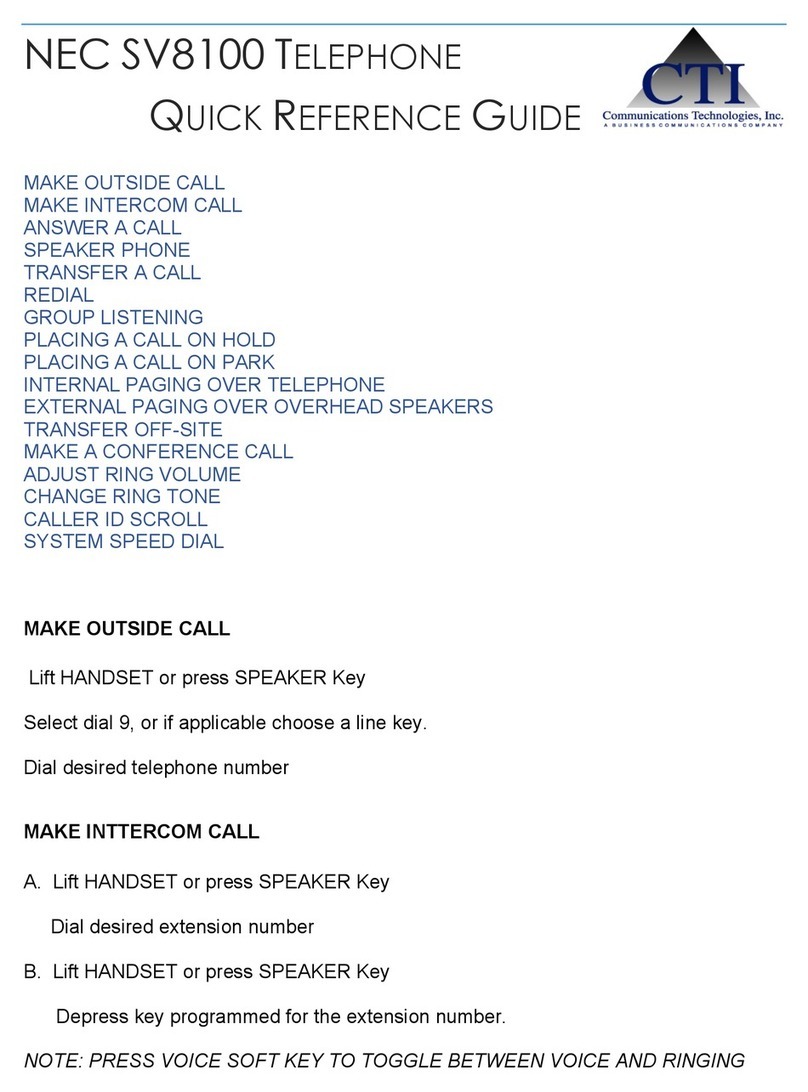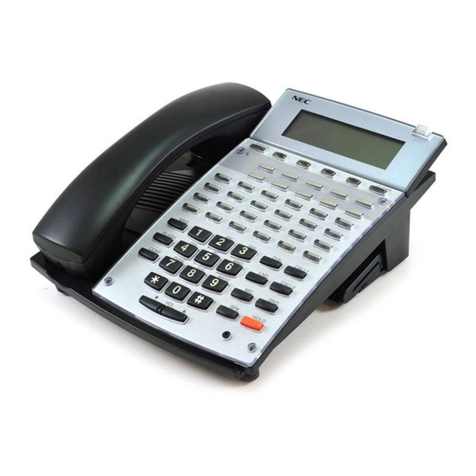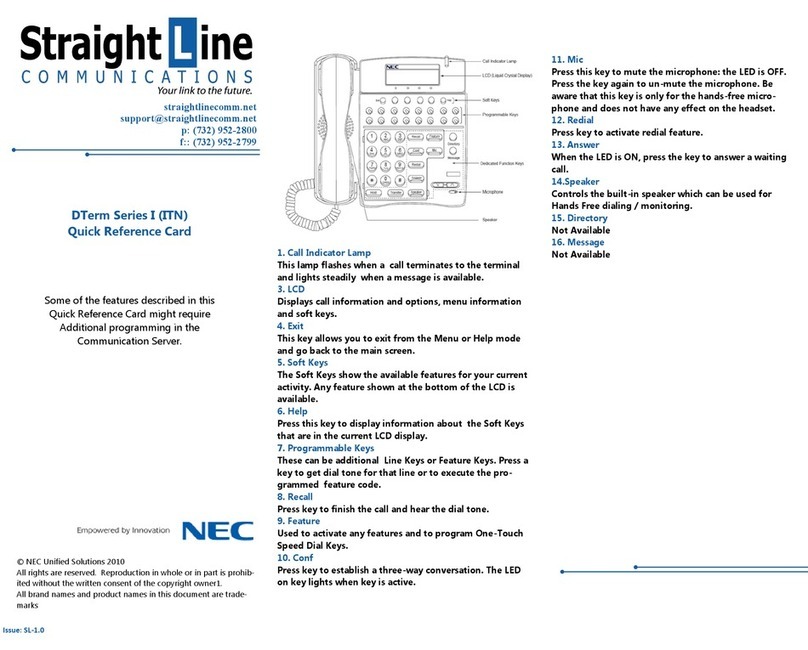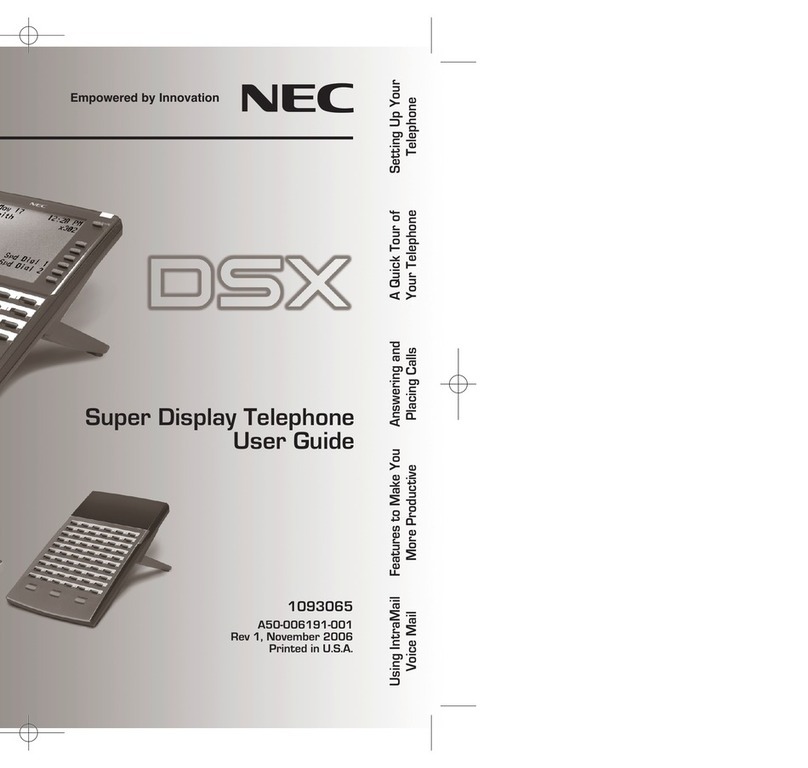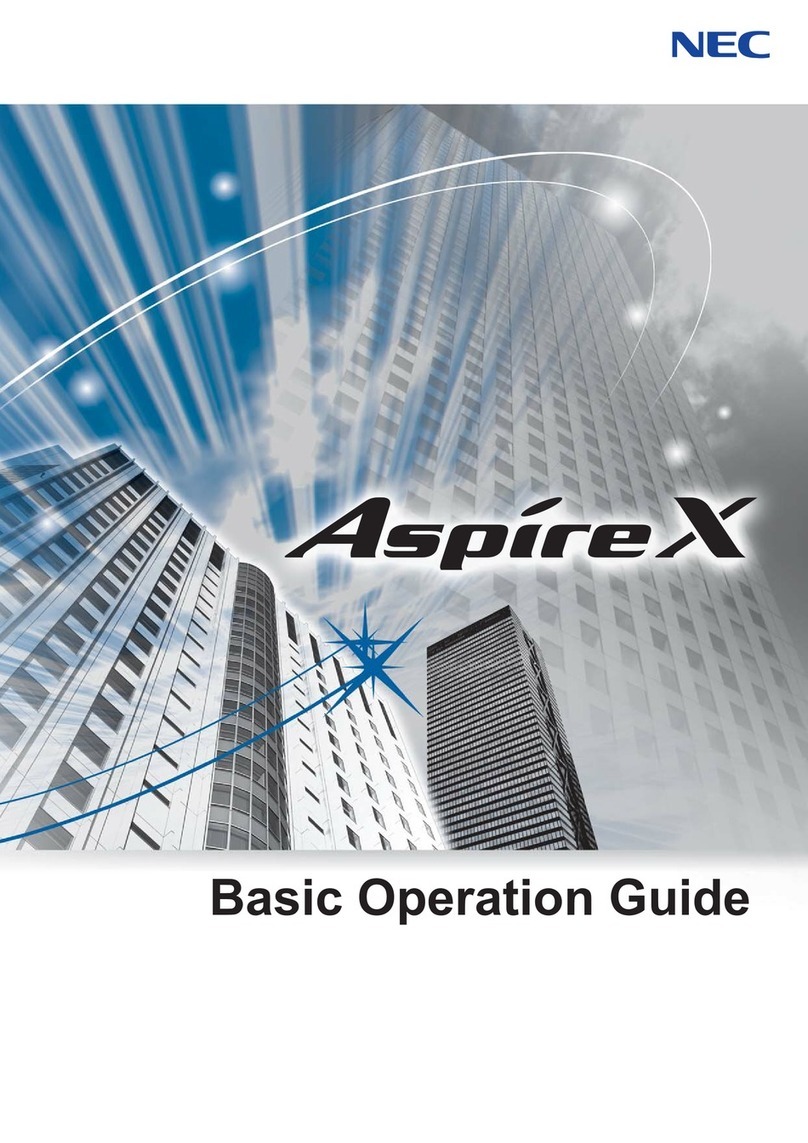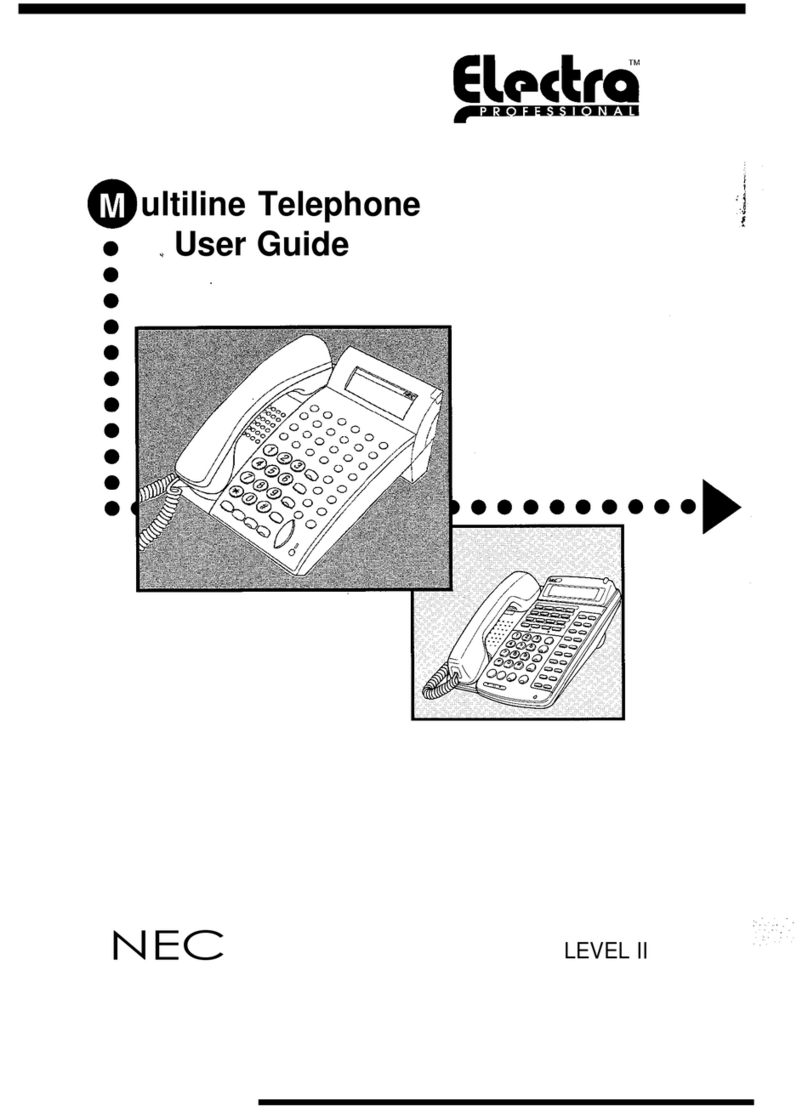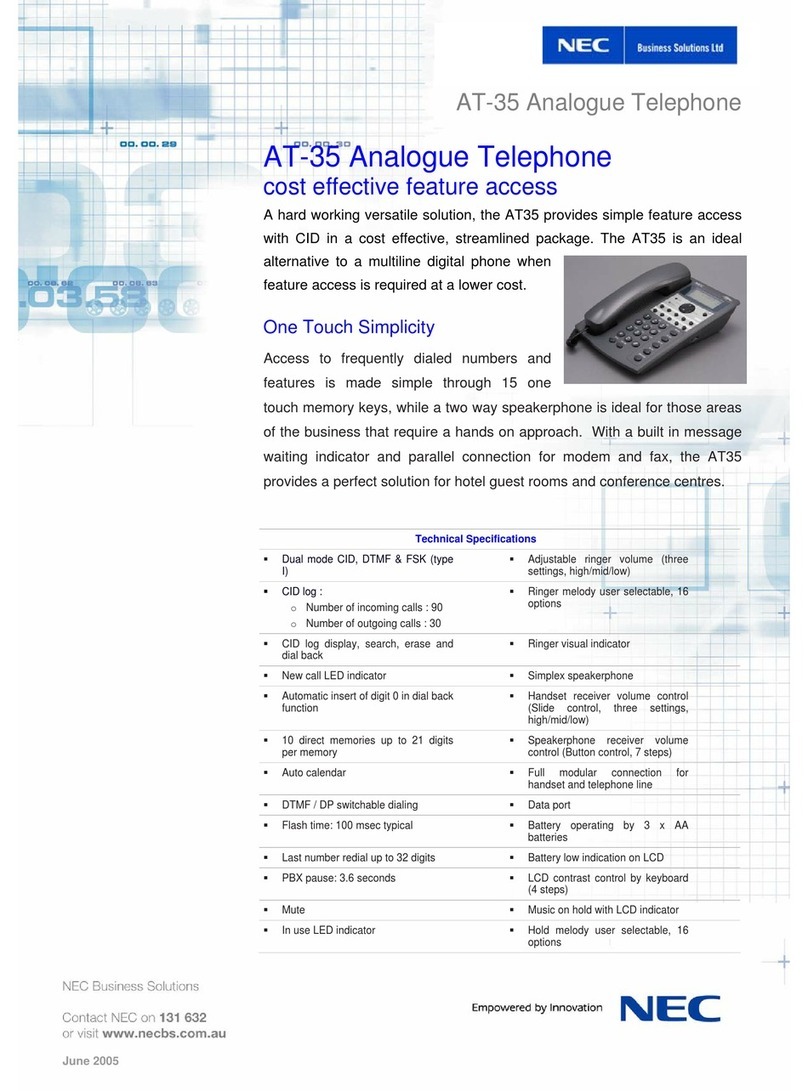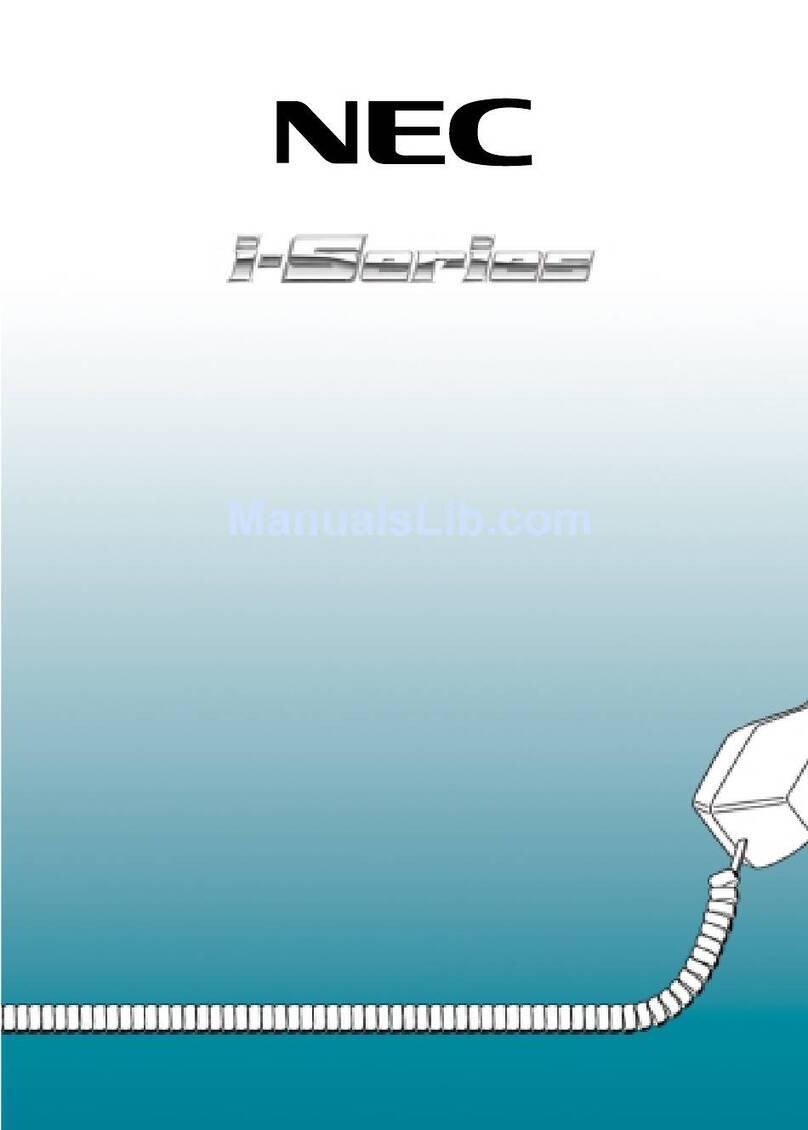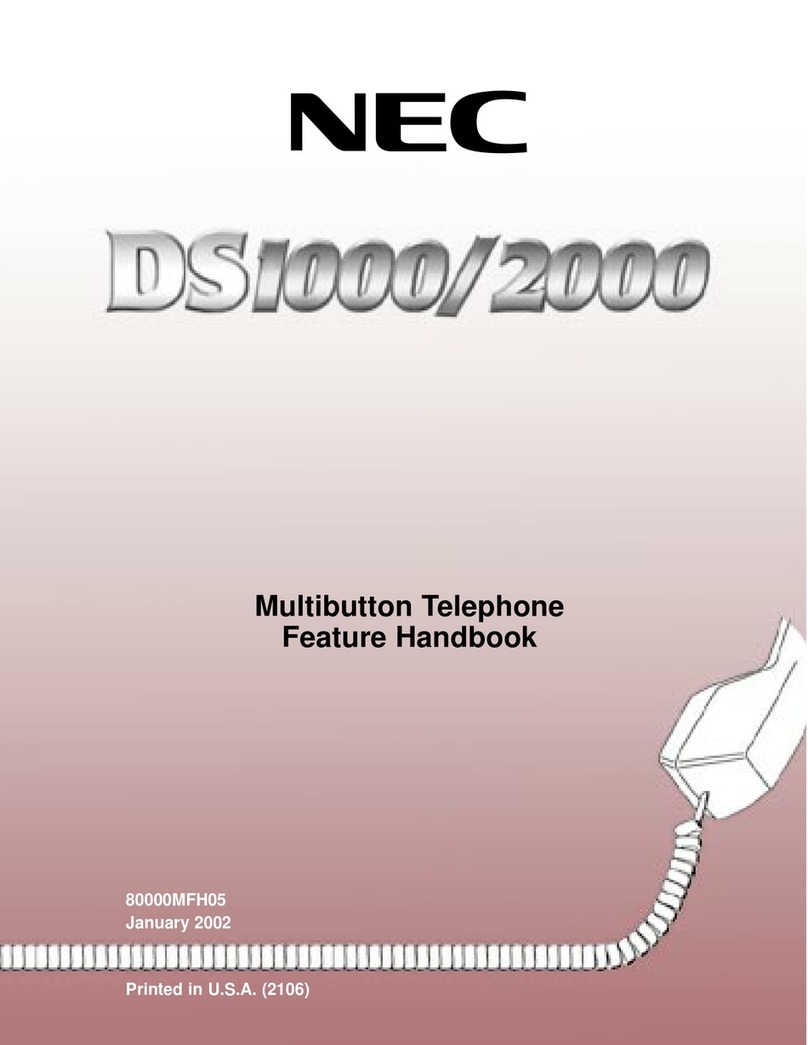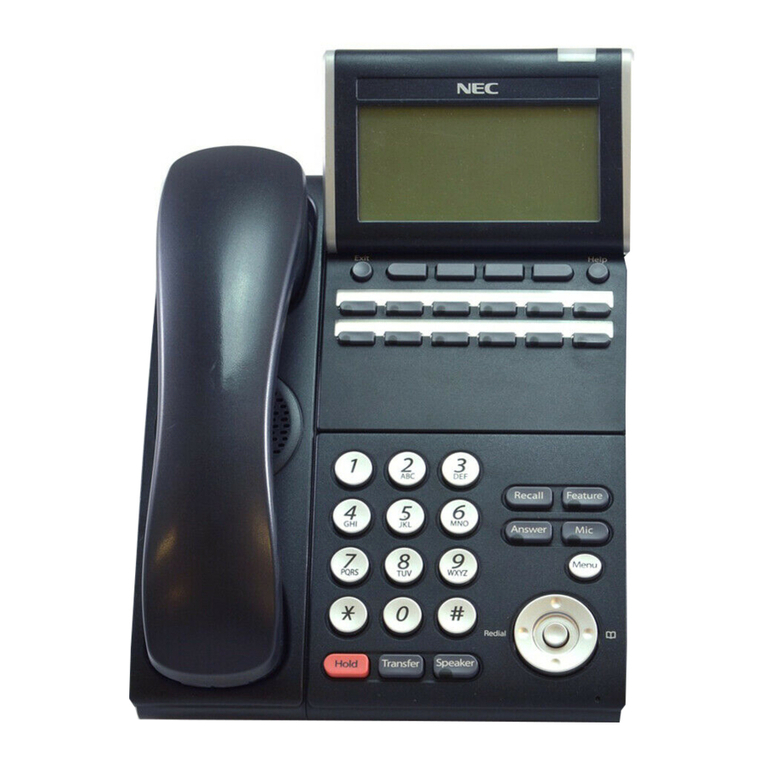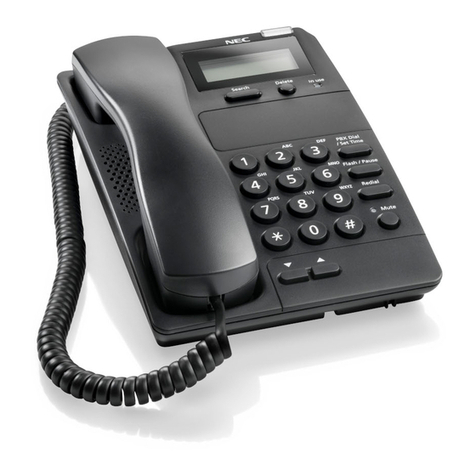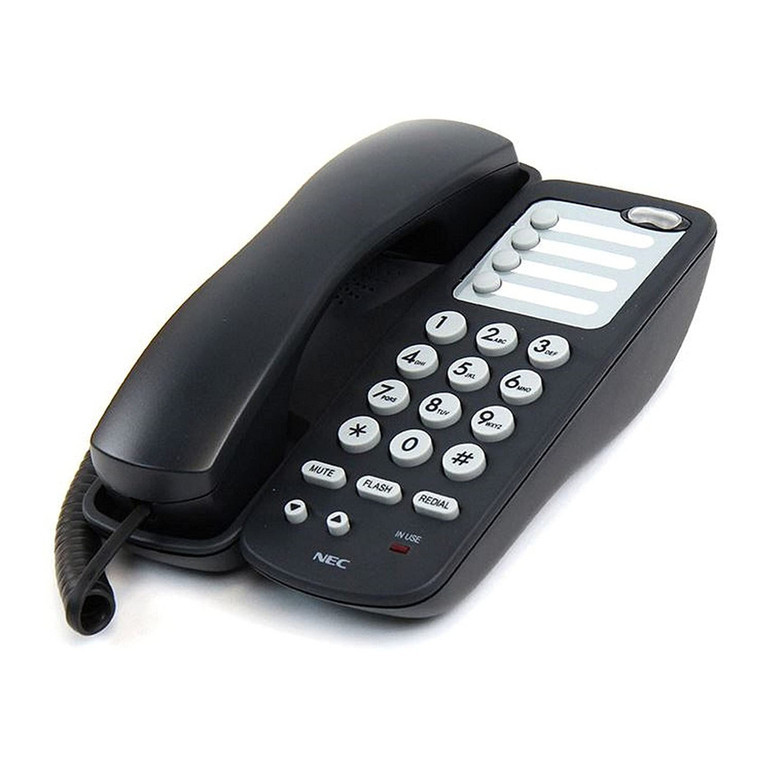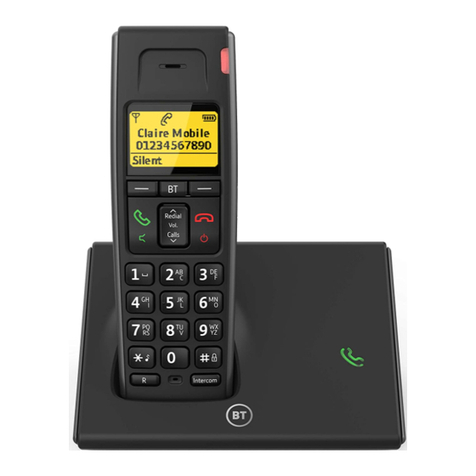
4
notification when events (such as missed call and
voice mail) occur.
(b) Desi-Less Information Area
This area provides the information on 32 (8 keys x
4 pages) Programmable Line/Feature keys. For
more details see DESI-LESS DISPLAY.
(b) Time/Feature Activity Information Area (in-
cluding Soft Key information)
This area provide the current time display and
information on various feature activities. Also, soft
key information is displayed on the botton line of
this area.
(4) Exit
To exit from the Menu or Help mode and go back
to the time display.
(5) Soft Keys
Any feature shown at the bottom of the LCD is
available. The appropriate feature key is displayed
on the screen according to the call handling pro-
cess.
(6) Help
Explanations of the Soft Keys can be called up on
the LCD by pressing this key.
(7) Recall
Press key to finish the call and hear the dial tone.
(8) Feature
Used to activate any features as terminal setup
functions, etc. and to program One-Touch Speed
Dial Keys.
(9) Answer
When LED on this key is lit, press key to answer a
waiting call.
(10) Mic
Press key to respond hands free. LED on this key
lights during speakerphone operation.
(11) Menu
To access the local menu of DT750, such as Call
History, Directory or Terminal Setting.
(12) Cursor
By using this key, DT750 user can access to vari-
ous features with simple operation.
Details on Cursor key
(DOWN UP)
Used to adjust LCD contrast, speaker/receiver
volume, and ringer volume.
• LCD Contrast:
Press ( ) or ( ) key while idle.
• Speaker/Receiver Volume:
Press ( ) or ( ) key during conversation.
• Ringer Volume:
Press ( ) or ( ) key during ringing.
(4-way Scroll UP key)
(4-way Scroll LEFT key)
Redial key
Volume (UP) key
(a)
(b)
Enter Key
(d)
(4-way Scroll RIGHT key)
Directory key
(c)
(4-way Scroll DOWN key)
Volume (DOWN) key
(a)



